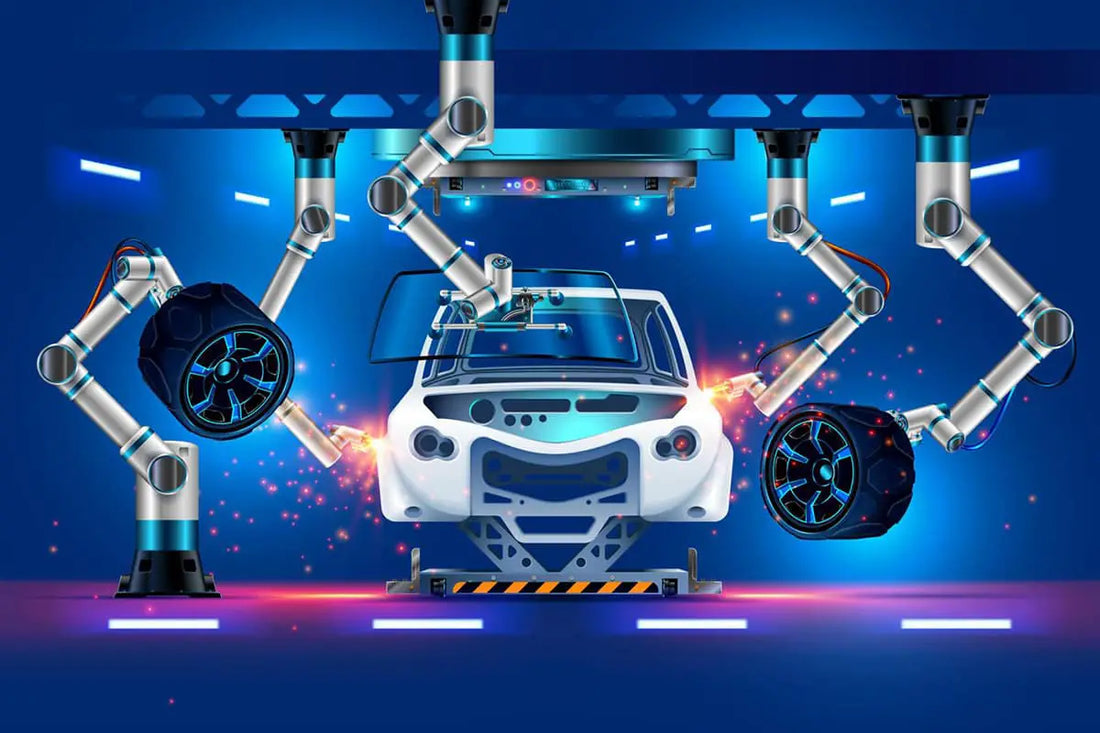Laser welding technology is characterized by high process efficiency and flexibility. In the automotive manufacturing process, it can be used to weld car bodies and various automotive components, reducing the total weight of the body, improving the precision of body assembly, and meeting the demands for light weight and improved safety performance in automobile manufacturing.
It also helps reduce assembly and stamping costs in automobile manufacturing, thereby improving body integration.
Therefore, how to actively and effectively apply laser welding technology has become a consideration for today's automotive manufacturers. This article will discuss the application of laser welding technology in detail.
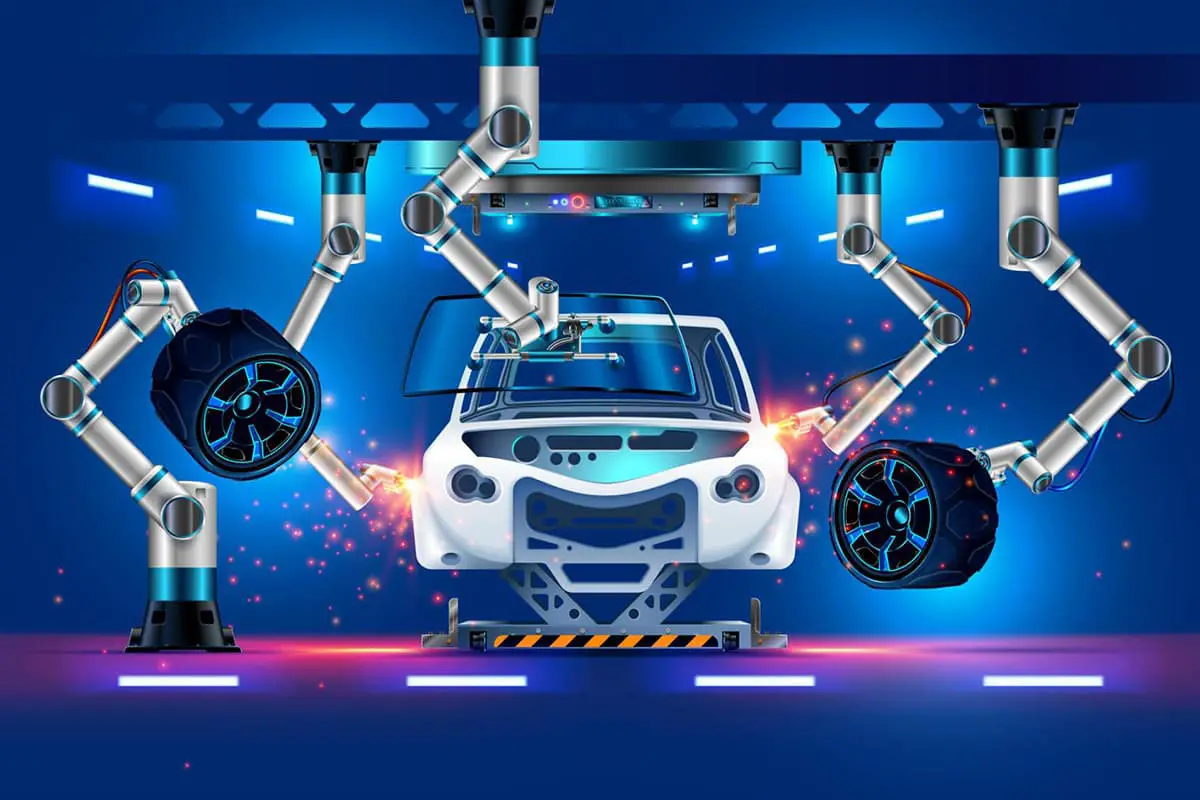
1. An Overview of Laser Welding Technology
1.1 Principle of Laser Welding Technology
Laser welding, fundamentally a fusion welding technology, uses a laser beam as the primary source of energy. Through a certain impact force, the welding of the parts is completed.
The generation of the laser beam is carried out using an optical oscillator. When a high-powered laser beam acts on the metal surface, it can quickly vaporize the metal. As the molten metal liquid surrounds the vaporized hole, a weld seam is formed under the reaction of stress and heating and cooling method, finally completing the welding of the metal.
It is important to note that the laser beam has different densities at different powers, which affects the depth of the weld seam. As the laser beam density increases, the fusion depth increases, resulting in a deeper weld seam. On the other hand, it will reduce the depth of the melt, making it shallower.
1.2 Advantages and Disadvantages of Laser Welding Technology
The advantages of laser welding technology play a significant role in today's automotive manufacturing, mainly reflected in the following aspects: actual welding is subject to small heat-affected range and smaller deformation. The welding quality and precision are relatively high, ensuring aesthetics while ensuring quality.
The specific welding operation is flexible, efficient and can meet the company's needs. Construction noise is low and has an impressive energy-saving effect. It is suitable for welding brittle, high-strength and high-melting-point materials. See Table 1 for details.
Table 1: Score comparison of different welding technologies
| Comparison Project | laser welding | Electron beam welding | tungsten inert gas arc welding | Resistance welding |
| Welding efficiency | 6 | 7 | 4 | 8 |
| Large depth ratio | 9 | 8 | 3 | 4 |
| Morphology of the weld cross section | 8 | 8 | 5 | 5 |
| Atmospheric pressure welding | 9 | 3 | 7 | 9 |
| Welding high reflectivity materials | 4 | 8 | 7 | 8 |
| cost | 4 | 3 | 8 | 8 |
| Operational costs | 6 | 6 | 7 | 9 |
| reliability | 8 | 4 | 8 | 9 |
| High welding speed | 9 | 9 | 8 | two |
- Note: 1-10 is the assessment score, with 1 being the lowest and 10 being the highest.
However, laser welding technology also has some shortcomings, specifically: high requirements for welding positions, focusing on the scope of welding requirements. Not suitable for materials with significant thickness.
The welding effect is impacted when welding materials with high thermal conductivity. The low energy conversion efficiency and fast solidification time of the weld seam, to a certain extent, restrict the welding effect.
2. Practical applications of laser welding technology
2.1 Laser conduction welding
In the domain of laser welding technology, laser conduction welding refers to the process in which two or more parts are fused into a unified whole after melting and cooling, achieving effective welding. This method does not require added flux, offering a cost-saving advantage.
During operation, under the effect of the laser beam, the surface temperature of the parts to be welded quickly reaches the boiling point, vaporizing the metal and creating a cavity, as illustrated in Figure 1.
The cavity stops deepening when the recoil pressure of the metal vapor balances with the surface tension and gravity of the liquid metal. Welding is completed when the stable depth cavity closes, marking the completion of deep penetration laser welding.
Currently, in automobile manufacturing, laser conduction welding is widely applied in body assembly, grouping and welding of components. For example, Volkswagen models such as Passat, Tiguan and Jettas employ this welding method when welding the side panels. Likewise, certain Peugeot and Citroën models use laser conduction welding on their doors.
Furthermore, based on the types of weld beads, there are various classifications, including single straight beads, multiple beads and non-linear beads. Due to the simplicity of producing a single weld bead, it has been widely adopted.
Volkswagen in Germany pioneered the application of laser spot welding to the Audi model chassis in 1985, and Toyota in Japan followed in 1986 with wire-fed laser welding for the vehicle's body side structure.
The mass application of laser spot welding technology in North America began in 1993, when the United States aimed to increase the competitiveness of American cars compared to Japanese ones with Project 2mm.
To date, almost all renowned automobile manufacturers around the world have extensively adopted laser spot welding technology, covering structural components such as side moldings, inner door panels, windshield moldings, wheel casings, dashboards, floor and central pillars.
The United States was one of the first to introduce high-power lasers to the automotive industry, with dozens of laser processing stations in the Detroit area focusing on cutting automotive metal parts and welding equipment. This advance reduced the time needed to redesign cars from five years to two.
General Motors in the US has implemented more than twenty laser processing production lines, and Ford Motor Company has employed Nd:YAG lasers combined with industrial robots to weld automobile bodies, significantly reducing manufacturing costs.
In 2000, 50% of the resistance spot welding production lines of the three major US automakers were replaced with laser welding lines.
In Japan, the successful application of laser welding in production lines has attracted worldwide attention, as the innovative method of laser welding thin sheets of steel before forming them into automotive body parts is now emulated by most manufacturers. of automobiles around the world.
Many renowned automobile companies have established production lines specializing in laser welding: Thyssen's automobile floor assembly welding line, Volkswagen's gear laser processing line, and Mercedes-Benz, which has installed laser processing equipment in 8 of the 18 factories.
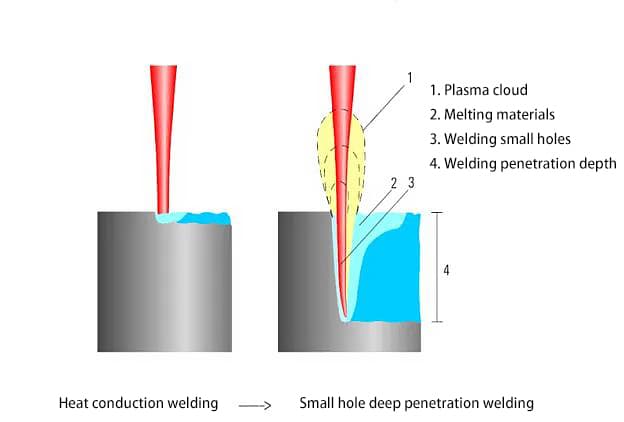
2.2 Laser wire fill welding
In laser welding technology, the principle of laser wire fill welding involves adding a specific welding material to the weld seam. The laser beam melts the added welding material, forming a welded joint.
Compared with traditional wireless welding methods, laser wire welding offers significant advantages. It not only expands the application range of laser welding, but also allows the welding of thick plates with lower power, achieving high welding quality.
It is important to note that in laser wire fill welding, both the welding wire and the base material must be melted. This creates small holes in the base material, allowing the wire and base material to fully fuse and form a new mixed molten pool.
This mixed molten pool differs significantly from the welding wire and base material, potentially improving certain performance deficiencies of the base material. Using welding wire with suitable composition as filler material ensures that the welding seam has high resistance to wear and corrosion.
2.3 Hybrid Laser-Arc Welding
In laser welding, the principle of laser-arc hybrid welding combines a laser heat source with an electric arc to act together in a single molten pool, thus achieving welding. As shown in Figure 2, this welding method features minimal deformation, high speed and great adaptability.
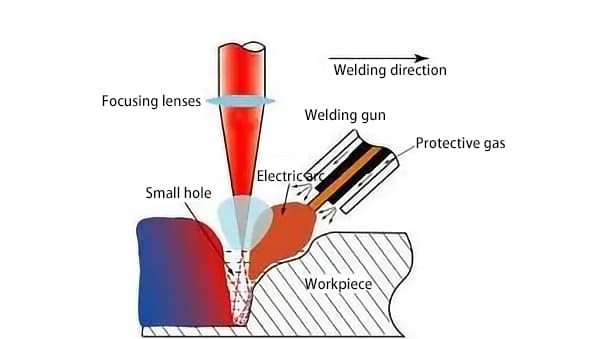
In the production of the Audi AG car series in Germany, hybrid laser arc welding is applied to the welding of the most critical all-aluminum car bodies. This body belongs to the luxurious second-generation Audi A8 series, designed with a focus on impact safety and resistance to torsional deformation. The weld beads produced by hybrid arc-laser welding meet all requirements, exhibiting toughness, high strength and deep fusion.
To meet customers' high expectations for this car, every detail is meticulously crafted to ensure manufacturing quality. The narrow weld beads of hybrid laser welding meet the high appearance standards required for workpieces, eliminating the need for plastic strips to fill corners on the top of the car body structure.
In the manufacture of light vehicles, all of the above-mentioned requirements, together with some special conditions, must be met, and the production process of an all-aluminum body has even stricter requirements.
2.4 Remote Laser Welding
In laser welding technology, remote laser welding allows long-distance processing with the aid of high-speed scanning galvanometer heads, performing welding with laser beams of different powers on parts.
Due to its unique technological advantages, it is widely used in the panoramic sunroofs of Mercedes-Benz and the side welding of Volkswagen and Audi cars. At present, when applying laser remote welding in automobile manufacturing, it offers the following advantages:
(1) High positioning accuracy, enabling fast welding to meet the manufacturing needs of automotive companies.
(2) The ability to combine different structural strengths for welding, meeting the needs of various weld seam shapes.
Remote laser welding requires high-quality materials and equipment. With thicker components, it is not possible to reduce the depth of the weld seam, resulting in lower shear strength in the weld.
2.5 Laser Brazing
In laser welding technology, laser brazing offers advantages such as aesthetically pleasing shapes and strong sealing along with high weld strength. The fundamental principle involves focusing a laser beam on the surface of the filler wire, melting it, and then filling it into the weld area to complete the brazing process.
Although similar to fusion welding, the base material does not melt in this method. Therefore, the brazing material must have a lower melting point than the base material, allowing effective welding through the liquid brazing material, as illustrated in Figure 3.
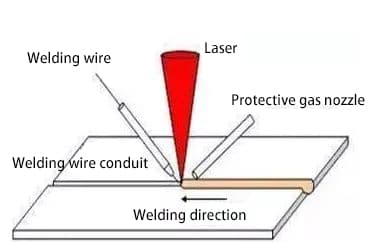
Currently, laser brazing is used to weld trunk lids on Volkswagen, Haima, Chery and Audi vehicles. It is also frequently used in the roof and side frame connections of brands such as Cadillac, Porsche, Ford and Volkswagen.
When using this technique, it is crucial to consider the impact of various factors on the welding process, especially process parameters such as welding speed, laser power and beam diameter. These parameters must be adjusted and designed according to the specific welding requirements to ensure the effectiveness of laser brazing.
Laser brazing equipment typically integrates the brazing processing lens into a robotic arm. The laser beam is focused on the junction of the sheets, melting the filler wire (e.g. copper-silicon wire) to connect the parts. The success of this method lies in achieving a joint strength close to that of the weld, and its welds are known for their beauty.
Welds produced by laser brazing are recognized for their high sealing properties and smooth, clean appearance, making rework almost unnecessary. For example, vehicle bodies can be painted directly after cleaning.

Laserline diode lasers are highly regarded worldwide for their practicality in the field of laser brazing. More than 800 LDF diode lasers have been successfully deployed for long-term use in automotive body assembly applications around the world. High-quality laser brazing not only requires high solder strength and minimal thermal impact, but also demands aesthetic appeal from the solder connections.
A significant processing advantage of semiconductor lasers is the stability of the weld pool they produce. Furthermore, the three-beam module developed by Laserline has demonstrated greater advantages in brazing applications, ensuring high-quality weld connections without reducing welding speed, even when welding challenging materials such as hot-dip galvanized steel sheets.
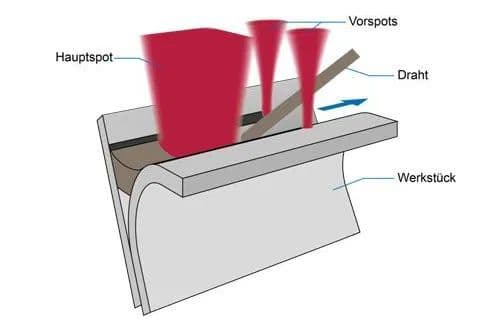
In the production of automotive bodies, laser brazing has already become a conventional processing method.
However, the increasing use of galvanized steel sheet materials has introduced some challenges, such as increased particle spatter during brazing and ripple in the weld connection, necessitating a reduction in processing speed to avoid these problems.
Laserline has developed an innovative solution: using a multibeam module, with side beams positioned in front of the main beam, to first remove the galvanized layer around the weld bead, thus ensuring a smooth brazing process without the need to reduce the welding speed. brazing. This technique has been well received in the industry.
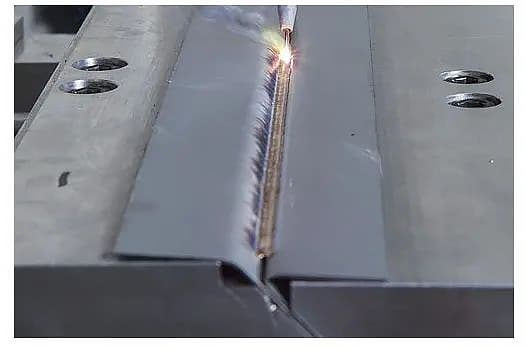
Traditional diode laser brazing of galvanized steel sheet employs single-beam technology, with the laser source integrated into the brazing robot. Thanks to the stability of the melt pool produced by diode lasers, it is possible to coat the laser with silver or brass as a base material.
The welds are aesthetically pleasing and of high quality. Volkswagen Touran once conducted an experimental comparison between a 4 kW YAG laser and a 6 kW diode laser for brazing in Wolfsburg, Germany. The operational stability of the LDF diode laser has been confirmed in mass production.
Conclusion
For the automotive industry, different laser welding technologies offer varying utilization values.
Choosing the appropriate welding method for different parts of a vehicle can improve the overall quality of automotive manufacturing and meet the needs of automotive companies in terms of welding costs and efficiency.
By analyzing the principles, advantages and disadvantages of laser welding technologies, this article explores the application effects of laser self-fusion welding, laser wire fill welding, laser composite arc welding, remote laser welding and brazing laser in automotive manufacturing.
Provides welding expertise for the automotive industry, aims to improve the welding level of automotive enterprises, and promotes the healthy and sustainable development of the automotive industry.

